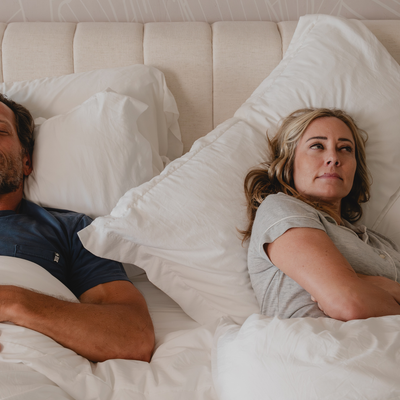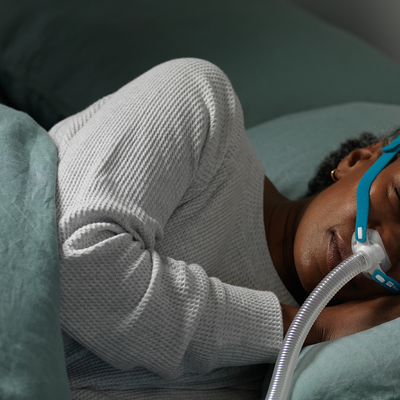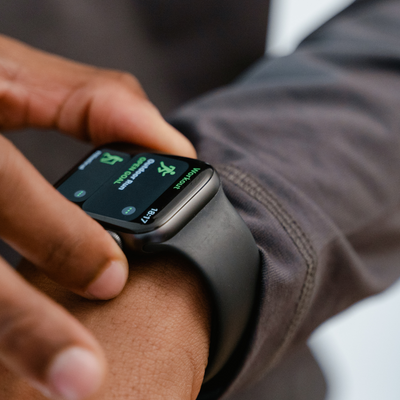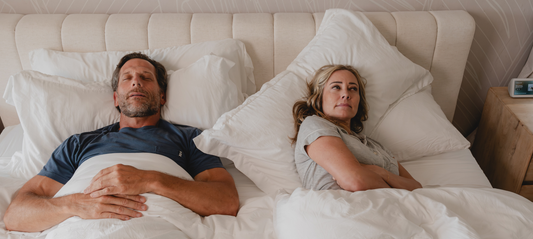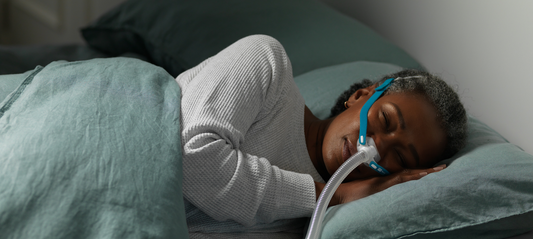June 5, 2023
Written by Brianna Graham
Getting a diagnosis for sleep apnea has historically been tough for many people. It used to require an uncomfortable night’s sleep in a hospital with all sorts of wires connected to you. All while someone monitored you from another room to make sure you didn’t stop breathing. In the best case scenarios, this was uncomfortable—but for some people, it was downright impossible.
Now that technology has evolved, you can get a sleep apnea diagnosis from the comfort of your home. But despite advancements in diagnosis and treatment options, there are health disparities that put People of Color at a disadvantage.
People of Color are at increased risk for obstructive sleep apnea
Sleep apnea isn’t a one-size-fits-all condition. To begin with, there are two main types of sleep apnea: obstructive sleep apnea (OSA) and central sleep apnea (CSA). People who have CSA stop breathing in their sleep because their brain fails to send signals to continue breathing. OSA physically blocks the airway to prevent adequate breathing while sleeping.
Like most conditions, OSA symptoms vary from person to person. Research shows that African American, Native American, and Hispanic people in the United States are more likely to develop OSA than white people. This is likely due, in part, to higher rates of obesity among these groups because obesity increases the risk for OSA—but that’s only part of the story.
In addition to an increased risk for OSA itself, many People of Color are also more likely to experience severe symptoms. And we’re not just talking about middle-aged and older adults. Young adults and children also experience health disparities for OSA. African American children are up to 6 times more likely to develop OSA than white children. Among children who have an OSA diagnosis, African American children experience higher levels of oxygen desaturation while they sleep than children of other races.
Morbidity and mortality rates for OSA also vary by race
OSA poses a serious health risk, especially if it goes undiagnosed. People who have it experience higher rates of comorbid conditions like high blood pressure, obesity, and diabetes, as well as higher mortality rates. And People of Color are more likely to experience both of these consequences.
Dying from OSA isn’t very common because of advances in treatment options. Continuous positive airway pressure (CPAP) machines and bilevel positive airway pressure (BiPAP) machines prevent people who have OSA from experiencing a blocked airway while they sleep. But every now and then someone dies from OSA in their sleep—likely because they weren’t using their CPAP, BiPAP, or other OSA treatment appropriately.
The total mortality rate for OSA in the United States is 2.5 per million people. However, the mortality rate for OSA is significantly higher for Black people than white people in the United States. The mortality rate for white people slightly decreases to 2.4 per million people, while the mortality rate for Black people increases to 3.5—a nearly 50% increase in risk!
Racial health disparities like these aren’t a new phenomenon. Bias and racism have impacted health outcomes for People of Color for centuries. Even when they have access to care, health disparities persist for People of Color because they routinely receive lower quality care than white people. These attitudes and barriers touch every part of the healthcare system, making it difficult for People of Color to get diagnosed and treated for OSA and many other conditions.
Lofta is a practical solution that increases access to care and treatment
Many barriers to high quality sleep medicine specialists are removed through Lofta’s model of care. Instead of scheduling in-person appointments and sleep studies, Lofta performs many of these services using a virtual approach.
Anyone can schedule a virtual appointment with a Lofta healthcare provider to determine if a home sleep test is appropriate for them. If it is, we’ll send you one to wear for a single night. Throw it out the next morning and you’ll find out if you have sleep apnea at your follow up appointment.
Accessing treatment is just as simple if you get a sleep apnea diagnosis. You can purchase a CPAP or BiPAP machine on the Lofta website. Depending on your circumstances, you might be able to submit the cost of services and equipment to your insurance for partial reimbursement.
Learn more about our sleep tests and sleep apnea treatment options to see if the gold standard Lofta approach is right for you!



